Continued from Part III
Profile of a successful AM radio station, March 2013: WSBS, Great Barrington, Massachusetts
Great Barrington is either a large village or a medium-sized town with a population of approximately 7,100. There are many listenable FM and AM radio stations from Albany, NY, Pittsfield, Springfield, and Poughkeepsie, NY markets. There are also a few local stations; WBCR-LP, WMAQ (WAMC repeater), and W254AU (WFCR repeater). While the competition is not fierce, citizens have a variety of stations to choose from.
WSBS is a class D AM station on 860 KHz with 2,700 watts daytime power, 250 watts critical hours, and 3.9 watts night time power.
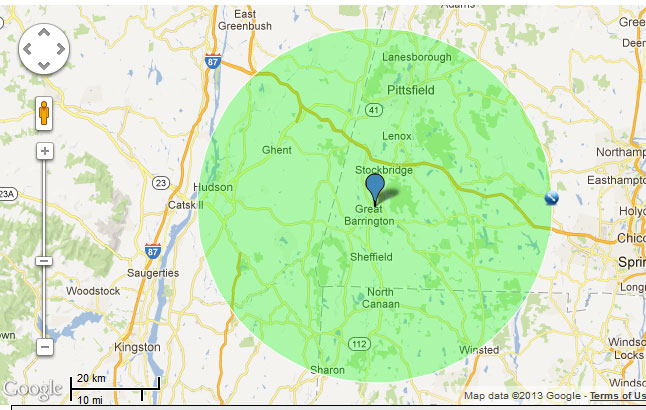
This is the approximate daytime coverage area for WSBS AM. I could not find any good coverage maps online, so I made this one myself. When I am driving, I get the station reliably to Kingston, NY, however, indoor listening may be a different matter. With 3.9 watts ERP, nighttime coverage does not include much of the city of license.
They have a translator on 94.1 MHz, W231AK. This is an example of when an FM translator on an AM station is a benefit to the community of license. W231AK has recently been moved from the top of the roof of the Fairview Hospital to the WSBS AM tower. During this move, the ERP was increased from 35 watts to 250 watts and the highly directional antenna was replaced in favor of a 2-bay half wave spaced circularly polarized Shively 6812.
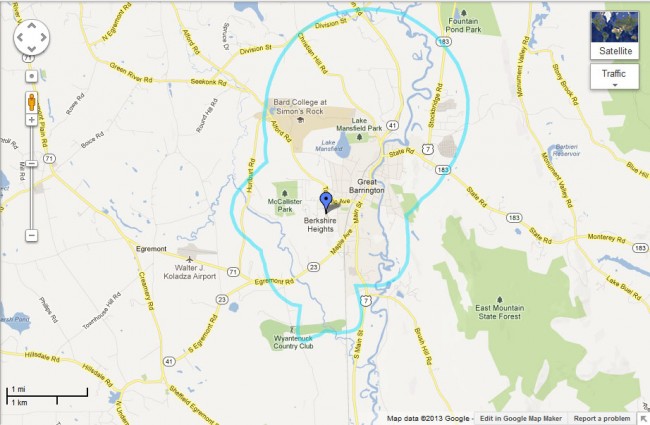
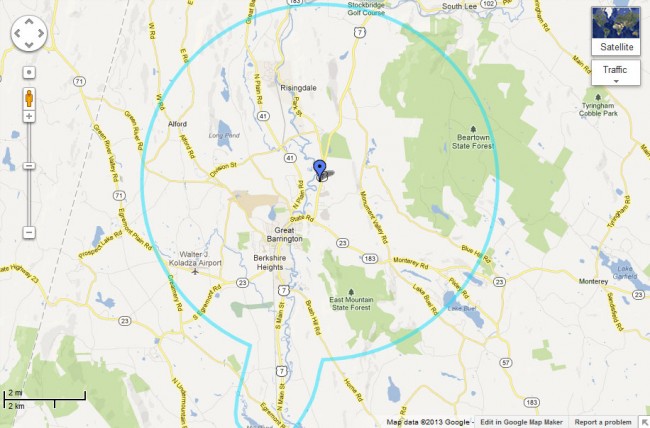
Not only did the move increase the translator’s coverage area, it also reduced operating expenses for the radio station, as they no longer have to pay rent or TELCO charges.
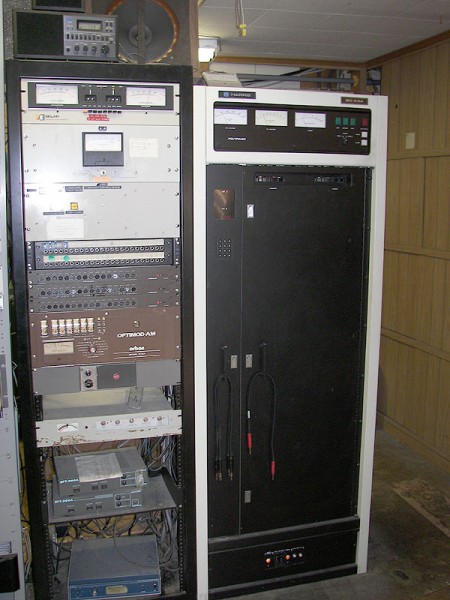
The main transmitter for the AM station is a Harris SX2.5 . It transmits from a 79-degree tower, the tower and antenna field are well-maintained.
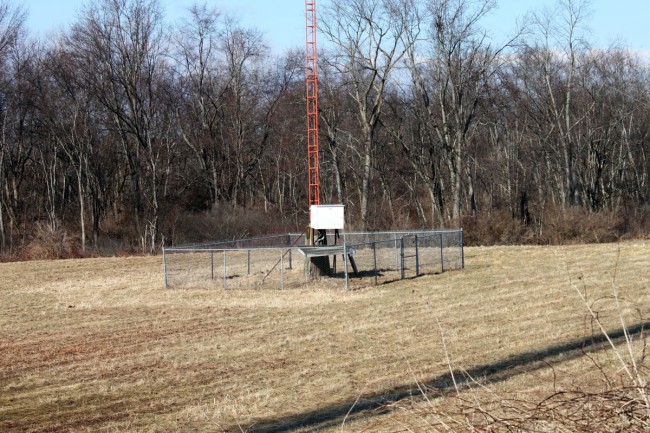
The studio has a new Audioarts Air4 console, which we just finished installing last December.
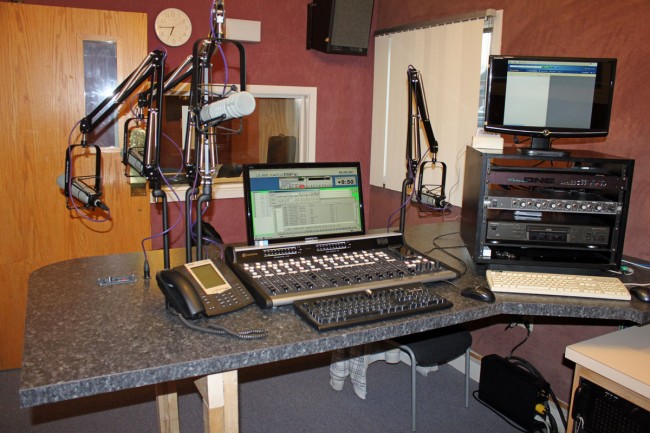
More pictures are available at NECRAT.
The station has an AC music format, which is quite popular. As the FM translator’s coverage has been quite limited until recently and there have been issues with the telephone company circuit taking the translator off the air, the majority of listeners are tuned to the AM signal. There is a live morning show and afternoon show, the rest of the day is voice tracked with music on hard drive. They have frequent contests and give aways. They also do local sports, community events, news and things like live election night coverage. In short, the station serves its community and, as demonstrated by a recent Chamber Business event at the station’s studio, the community appreciates its radio station.
There is nothing magic here; no gimmicks, IBOC, or another technical wizardry. This facility is at best, technically average, albeit well maintained. There is an older Orban Optimod processor, an older AM transmitter, and the original, electrically short tower. The station also has a working emergency generator. The only new tech is the web stream, which all radio stations should have.
The station is successful because of its programming, period. People love local radio. Making connections with listeners imparts a shared sense of community. Being on the air with a local presence during storms, even when the power is out, is a big deal. When it comes to relevance within the community and local businesses; in 2013 all radio stations need to earn that.
Conclusion:
I do not suffer from technophobia; when digital radio was first proposed, I welcomed the idea. It was not until I began looking at the technical proposals and iBiquity’s proprietary system that I became concerned. After hearing the initial implementation of AM HD radio on WOR in NYC, I was not impressed with either it’s audio quality or the side band interference that the analog/digital hybrid AM HD system created. What is of even greater concern is the propensity for government regulatory agencies to rubber stamp technical proposals by lobbying associations without testing or even fact checking.
Digital modulation methods at medium frequencies present a unique challenge where the ratio of the signal bandwidth to available frequency spectrum becomes too great to be practical. This is exacerbated at the lower end of the band where side band symmetry is difficult to achieve at ±15 KHz required by the all digital and the analog/digital hybrid version of AM HD radio.
Clearly, AM radio needs a technical revamping. Can it be saved? Yes. Is it worth saving? Yes. Is a yet unproven proprietary digital modulation scheme the way to do it? No.
And that is all I have to say on the matter.


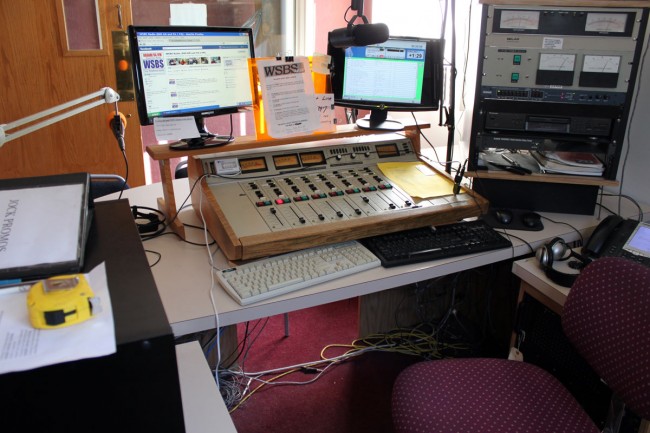
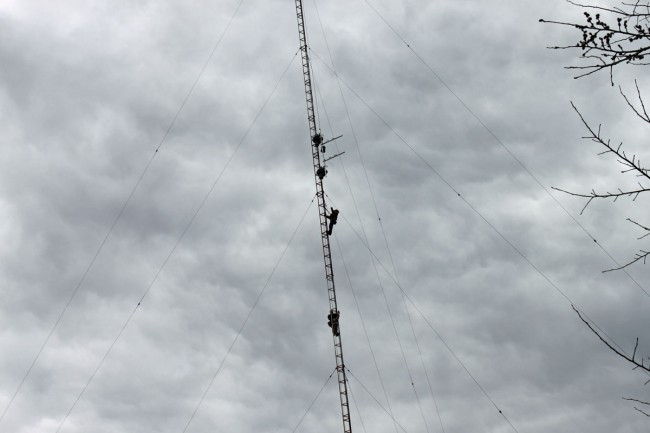
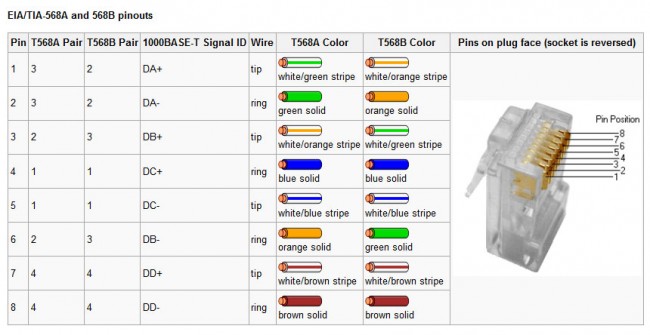
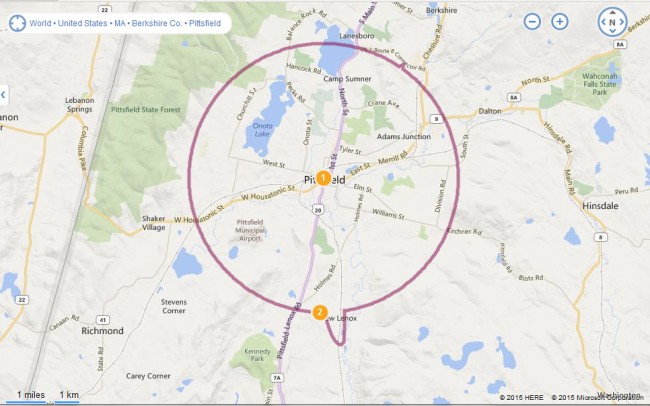
One big advantage WSBS has, is it is on a relatively open AM frequency. You can hear the station, in car, without much trouble in Springfield. In Westfield, I was able to pick it up using indoor radios.
Thanks to the 860 in Canada, the amount of allocated radio stations on 860 is quite limited around here.
In fact I can remember one day, back when I was very young, my folks and I were driving back from Carlisle, PA after visiting my late aunt, we had a oldsmobile with the famous Delco radio in it, and were about 30 miles outside of Wilkes-Barre. My dad, on a hunch, decided to see if we could hear WSBS. And sure enough, albiet very noisy, we could hear the little station cranking on through. (This was back in the 250 watt days too.)
When WSBS was sold off, and started automating air shifts, however, people in town noticed. I even had my father make a comment about it. However, the station is still super local, super-serves the town’s “original” residents (remember Gt Barrington is a unique combination of original residents and people who have moved in from NYC), and sells very well. Where I am now, in Quincy, MA, I can not hear WSBS due to 850 here in Boston, but I did hear it during the middle of the winter last year in Rehoboth for a bit.
I’m curious how you got those contours into google maps? Or is that a blog post all by itself? 😉
The photo of the transmitter room reminded me of an incident that occurred at WSBS before I arrived there in 1989.
The station would drop to night power by going from their “big” transmitter to a low-power LPB unit, switched through a common antenna changeover relay. One evening, some time after power reduction, the room began filling with smoke as the relay began sputtering and finally igniting. The solenoid coil had overheated and boom! Of course the relay was repaired and life went on, but everyone wondered for a long time how that had happened.
One late afternoon it was my turn to drop the power, and since I was near the transmitter room I did so by the buttons on the control rack, rather than by the remote buttons in the studio. I heard the thunk of the relay, then followed by the angry growl of a still-energized coil. It was happening again! But then I saw why.
The momentary-contact mechanical buttons in the rack had a tendency to ‘hang up’ when pushed, keeping the juice flowing and causing the relay to cook. I pried the button free with a screwdriver and the growl stopped before it could melt and go pop a second time. The mystery had been solved.
I’m sure over the years there has been serious work done in that room, but next time you are in there, check for scorch marks or the dribble of tar around the plate where the relay is bolted, in the left rear of the room. I suspect the evidence of a meltdown from a good 20+ years prior might still be there.
If you are able to find a picture of the *old* WSBS, when it was a three-room, one-story shack on the side of Rt 7 (circa 1983), please publish it!
Mike, that makes my point about AM band congestion.
Walter, the FM translator contours come from the FCC website. Down on the bottom of the FM Query Results page, there is a link called “service contour on a google map.”
Alan, I’ll check and see if there are any pictures of the old studio building. Thus one of the hazards of remote switch panels. All of that is done by the remote control now on a timed bases. We took the extended meters and control buttons out of the studio when we redid it. I’ll look at the relays next time I am there.
Paul – If you have any access to reeeeallly old issues of Radio World (late 1989 to mid-1990), I wrote a lot about WSBS when I was there. Look around.
Alan, I’ll do some digging but I don’t think I have saved anything from that far back. Who knows though, perhaps in some drawer or pile at a transmitter site. I am going back there soon, so I’ll ask the local manager if he has anything
Re my anecdote of the relay meltdown:
There is a picture from the NECRAT site: http://www.necrat.us/wsbs-12.jpg
that shows what remained of the relay that went pop. Looks like the plywood backing that holds everything up was replaced, but notice the discoloration around the cables and ceiling tiles just above the red armatures of the right-hand (replacement) relay.
What a day that must’ve been.
I thought I had a picture which showed some heat damage!
Please pardon the off-topic query, but… I find myself wondering how many people called “Alan Peterson” there can be, working in radio. Some 35 years ago, I knew an Australian gentleman called Alan Peterson, in the context of establishing and running WSM Community Radio in Telford, England. Alan, is that you?
Colin , We have a plethora of “Bob Dayton” DJ ‘s in the states for some reason ,I only acknowledge the one that helped me in to WSPK in Poughkeepsie ,NY. Great person as everyone around the valley knows.
He’s still there after what must be nearly 30 plus years!
Paul,Be ready for a question that I’ve had for years about the power levels of WSPK vs WHUD.
How convienent,you’re the chief of both!
WSPK at 4.3KW TPO(7.5 ERP)and a seriously kick-ass signal.
WHUD at some 28KW TPO (50KW ERP),with the same HAAT(?).
Why Does WSPK have a more killer signal with apparent similar altitude?
I’ve travelled in every direction and,it’s just a fact.
Without me studying the maps,what’s it all about!
Thanks,
Elliot
I Don’t recall the HAAT of either station. But I can tell you that Mt. Beacon (WSPK Site) was so named because it was used during the Revolutionary war as the location of a signal fire to warn the Upstate Militia forces of an impending British Naval attack coming up the Hudson River from New York City. Clear line of site in all directions. Whud is somewhat hemmed in by Storm King Mountain and Mt. beacon to the north and West. Bear Mountain also blocks some of the HUD signal into the area of the 87/287 interchange in Western Rockland County. Although, I had relatives that lived in Staten Island NY that regularly listened to the station when I worked there in the 80’s. Everywhere else the HUD signal goes on forever.
WSPK at 4.3KW TPO(7.5 ERP)and a seriously kick-ass signal.
WHUD at some 28KW TPO (50KW ERP),with the same HAAT(?).
Why Does WSPK have a more killer signal with apparent similar altitude?
I’ve travelled in every direction and,it’s just a fact.
Without me studying the maps,what’s it all about!
Thanks,
Elliot